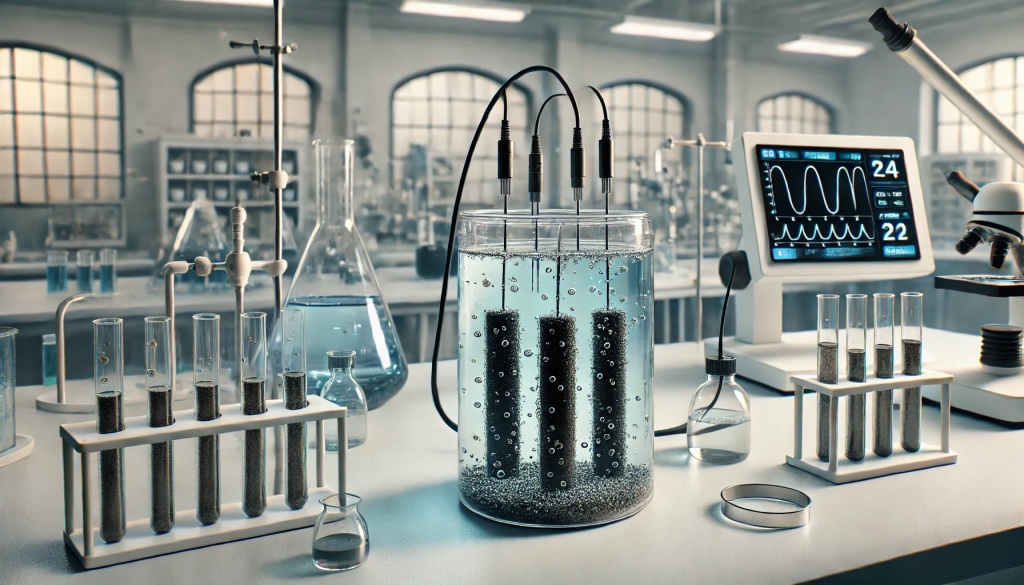Marzorati S., Magni M., Campisi S., Ghiara G., Valtorta G.A., Gervasini A., Trasatti S.P., 2024, Development of Biochar-based Composites Electrodes from Pyrolysis of Coffee Silverskin: Microbial Fuel Cells for Wastewater Treatment, Chemical Engineering Transactions, 109, 7-12 DOI:10.3303/CET24109002
A recent study explores the innovative use of biochar-based composites as electrodes in microbial fuel cells (MFCs) for wastewater treatment. By implementing circular economy principles, researchers have developed cost-effective and eco-friendly materials from coffee silverskin, a byproduct of coffee roasting.
Coffee silverskin was subjected to pyrolysis at 900°C to produce conductive biochar. This biochar was then utilized to create inks that formed microporous layers on carbon cloth, which served as cathodes in MFCs. The study also incorporated hydroxyapatite (HAP) into biochar to enhance the composite’s ability to remove inorganic pollutants like cadmium and zinc, while also treating organic pollutants.
MFCs operate by using bacteria found in wastewater to catalyze electrochemical reactions at the electrodes. This process reduces the Chemical Oxygen Demand (COD) of the wastewater and generates microcurrents. The study’s findings show that the biochar-based cathodes, particularly those combined with HAP, performed better than traditional materials, highlighting their potential for broader applications in pollutant removal.
Experiments demonstrated that the biochar-based MFCs achieved high COD removal efficiencies and generated more power compared to control MFCs using commercial activated carbon. Additionally, the HAP/biochar composites exhibited significant sorption capacities for heavy metals, suggesting their effectiveness in treating wastewater contaminated with both organic and inorganic pollutants.
This research underscores the potential of biochar-based materials in developing sustainable and efficient wastewater treatment technologies, addressing the dual challenges of environmental remediation and clean energy generation. The innovative approach not only promotes waste valorization but also paves the way for the future design of smarter bioelectrochemical systems.






Leave a comment